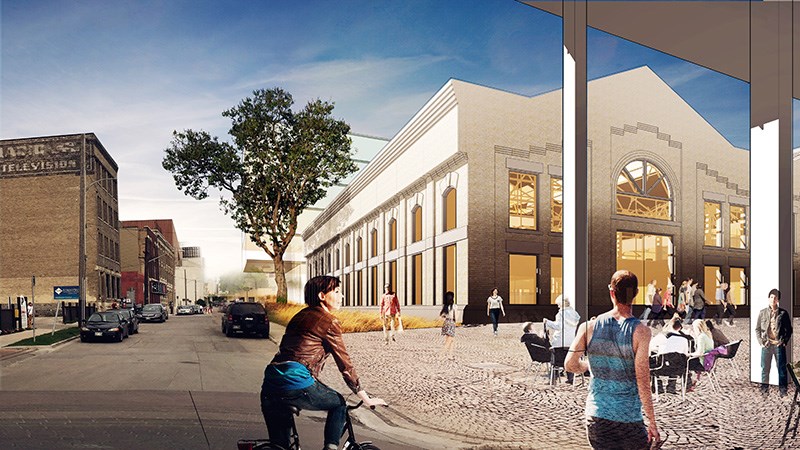Bryce Alston is a big believer in Winnipeg’s apartment market.
He’s one of a trio of developers behind the $17million redevelopment of the James Avenue Pumping Station in Winnipeg’s historic Exchange District.
Alston, with brother Rick and partner Mark Hofer, are investing $12 million over the next two years to create a new 84-unit apartment complex in a century-old warehouse.
The blueprints call for redeveloping the existing six-storey brick building plus constructing a new six-storey structure and underground parkade immediately to the west.
A combination of low interest rates, market stability and net migration is fuelling Alston’s bullishness for Winnipeg.
“It’s a good time to build rentals. The rental stock in Winnipeg is pretty poor compared to other metropolitan areas across the country. Half of it is barely habitable,” said the director of Victoria, B.C.-based Alston Properties.
He is also hoping to catch the development wave that is washing over downtown Winnipeg, with hundreds of millions of dollars’ worth of projects currently on the go.
“I like the energy downtown and how it’s picking up, including the restoration of the Exchange District and the SHED (Sports, Hospitality and Entertainment District). There is a lot of investment on the public and private side,” he said.
“The critical mass of residents needed to support some of those essential services, we’re getting there. It’s only going to get better and more livable. I think you’ll see an uptick in the market when those services are located in this area.”
Lai Sing Louie, regional economist for the Prairies and Territories at Canada Mortgage and Housing Corp., believes Alston has good reason for his optimism. Average housing prices in Winnipeg are up 2 per cent for the first nine months of 2016, and the apartment vacancy rate of 2.9 per cent is expected to remain steady.
“Landlords are able to pass on rent increases [to tenants]. There is choice in the market. Investors can make money. Rents have been consistently going up in Winnipeg,” he said.
CentreVenture Development Corp., Winnipeg’s downtown development agency, offers grants through its Face Forward program to property owners and retailers who wish to make significant storefront improvements. The grant can’t exceed 50 per cent of the first $15,000 of project costs and up to one-third of eligible project costs over and above that amount. The maximum grant is $50,000.
Saskatchewan rental incentives
The situation isn’t nearly as rosy in Saskatchewan as the apartment vacancy rate in Regina is 5.4 per cent and Saskatoon’s is even higher at 6.5 per cent. Louie attributes much of that to a sputtering economy, hampered by lower commodity prices.
Many landlords are offering incentives to would-be tenants in Saskatoon, such as a free month of rent or a lower damage deposit, but fewer carrots are being dangled in Regina because its market is slightly better, according to landlords.
There are currently 12,179 rental apartments in Regina, where an average two-bedroom unit costs $1,097 per month. Saskatoon has 13,370 apartments ($1,087 average rent) while Winnipeg has 55,376 ($1,045 average rent).
One of the challenges facing Saskatchewan is that international migration is down compared to previous years.
“Typically, we’d have 10,000 new residents per year,” said Duncan Mayer, Saskatoon-based research manager at Colliers International. “We’re going to be half of that this year, if we’re lucky.”
It also doesn’t help matters that the average apartment building in Saskatoon is nearly 50 years old. Many of the best buildings were lost a decade ago during the “condo conversion boom.”
“In 1990, we had 20,000 units. At the end of 2008, we were at 14,000 and now we’re back to around 17,000,” Mayer said.
There is “huge” demand for quality product, he added.
“Older stock will need a considerable facelift to compete with all of the newer buildings that have come on the market in the last number of years,” Mayer said.
Louie noted a growing number of investors are buying condos and renting them out.
There are an estimated 6,908 condos in Regina with 1,876 rented out, or 27 per cent. There are 2,184 out of Saskatoon’s 10,575 condos used for rental purposes, or 20.7 per cent, while 18 per cent of Winnipeg’s 15,994 condos are rented out.



